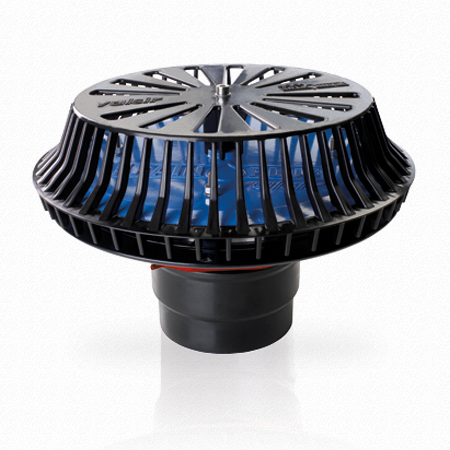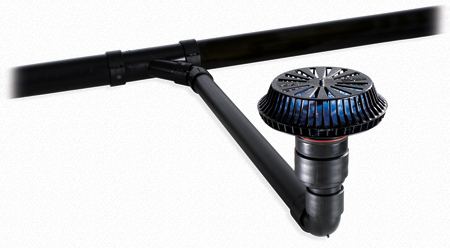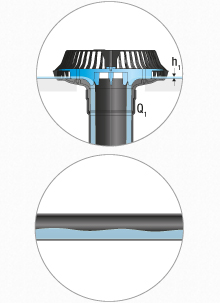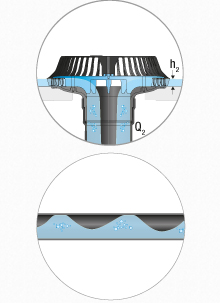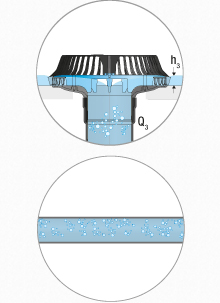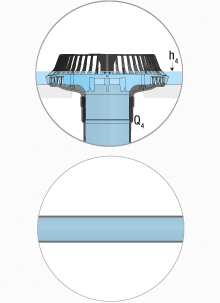Rainplus®, how does it work?
Rainplus® is defined as a siphonic rainwater drainage system because it is based on the same principle as a siphon. The siphon is in general a reversed U shaped pipe used to pour a fluid from one container to another located in a lower position.


